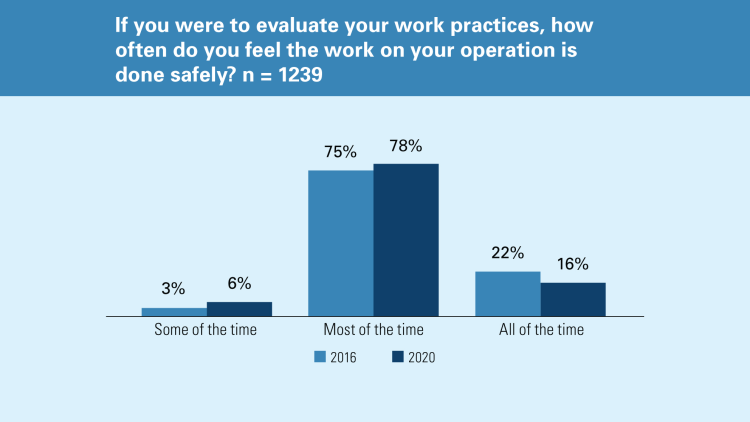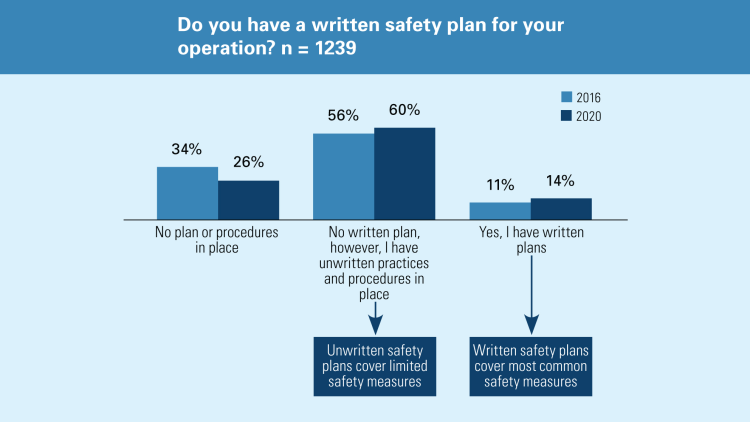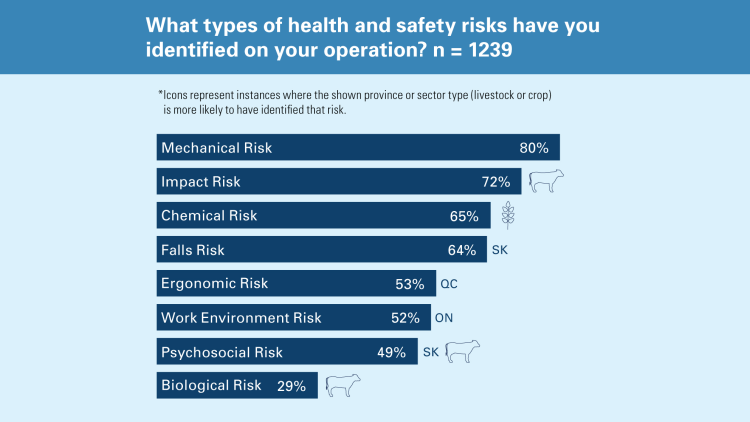Written farm safety plan - an underappreciated tool

“If you send a loved one to work at a place where safety is done ‘most of the time,’ is that good enough?” asks Jody Wacowich, executive director of AgSafe Alberta.
Wacowich says, taking some time to plan for farm safety can reduce the chance of injuries or fatalities.
Besides the obvious benefits of preventing accidents, farmers also reduce costs incurred through things like damage to equipment or property, lost time or loss of business, Wacowich adds.
A recently released FCC Market Insights study completed for the Canadian Agricultural Safety Association (CASA) said 78% of producers believed work on their operation was done safely most of the time.

Sources: Canadian Agricultural Safety Association (CASA) and FCC data.
Overall, farm safety plans and protocols are a good risk management strategy and business management practice.
“The health and safety of all who work in agriculture is important, so everyone should have a safety plan,” says Marcel Hacault, executive director of CASA.
Written plans
A written farm safety plan allows people other than yourself to know what to do.
Only 14% of producers have a written safety plan, although 60% have unwritten practices and procedures in place, the study reported.
COVID-19 highlighted the necessity of written plans, but the pandemic is only one among numerous worst-case scenarios that could disrupt a farm’s operations.
“A written plan allows people other than yourself to know what to do,” says Hacault. “If, for whatever reason, you cannot get the job done, you still need to be able to have a way to get the work done.”

Sources: Canadian Agricultural Safety Association (CASA) and FCC data.
Plan must-haves
Wacowich says all safety plans should include:
Hazard assessment and control
Emergency response planning
Inspections
Recruitment and training
Management leadership and commitment
Health and safety representatives or committees
Incident investigations
Administration of the plan
Hacault advises farm operators to review and update their plans regularly.
Getting started
Hacault says farmers writing farm safety plans for the first time should initially address the highest risks and hazards of an operation.

Sources: Canadian Agricultural Safety Association (CASA) and FCC data.
“Start small and let it grow. It’s not something you can do in a day,” Wacowich points out.
Some farms may already have pieces in place if they’re following a food safety or quality assurance program, or have an environmental farm plan completed, she says.
Both Hacault and Wacowich recommend including the family when hashing out a safety plan.
“The more involved they are, the more likely they are to commit to the entire process,” Wacowich says.
Bottom line
Safety must be crucial to the operation of farms, say experts, who explain a detailed written plan can reduce injuries and fatalities while minimizing disruptions when incidents occur.
Farm safety plans should address strategies for matters such as hazard assessment and control, emergency responses, inspections, management and leadership and administration of the plan.
Article by: Richard Kamchen

Many operations are taking their farm management digital and putting data in the cloud. Learn about the different cloud options and how to keep your information safe and secure.
